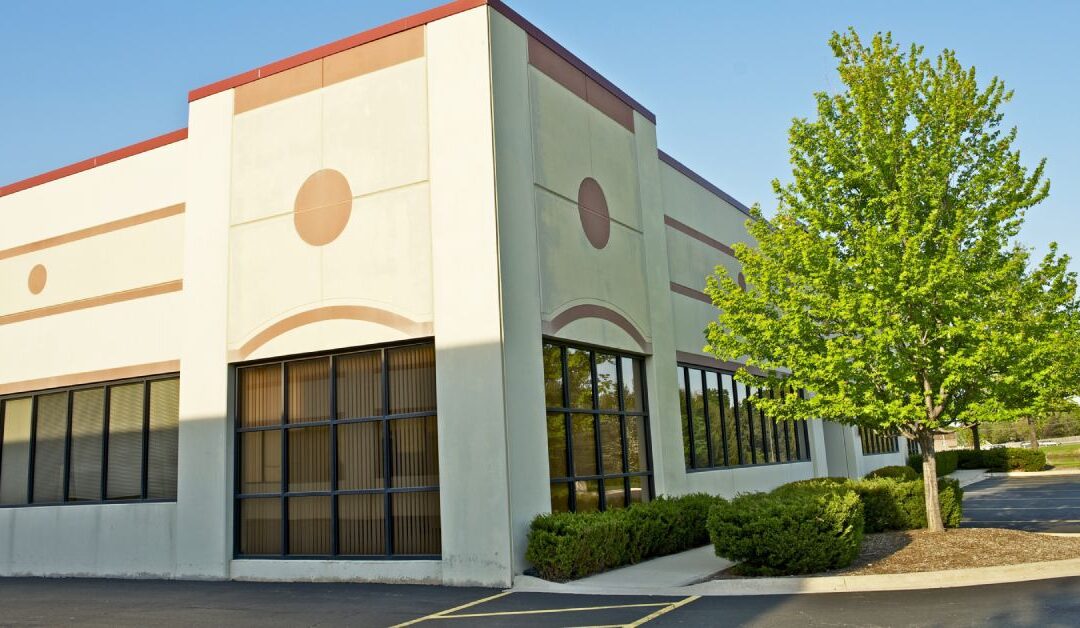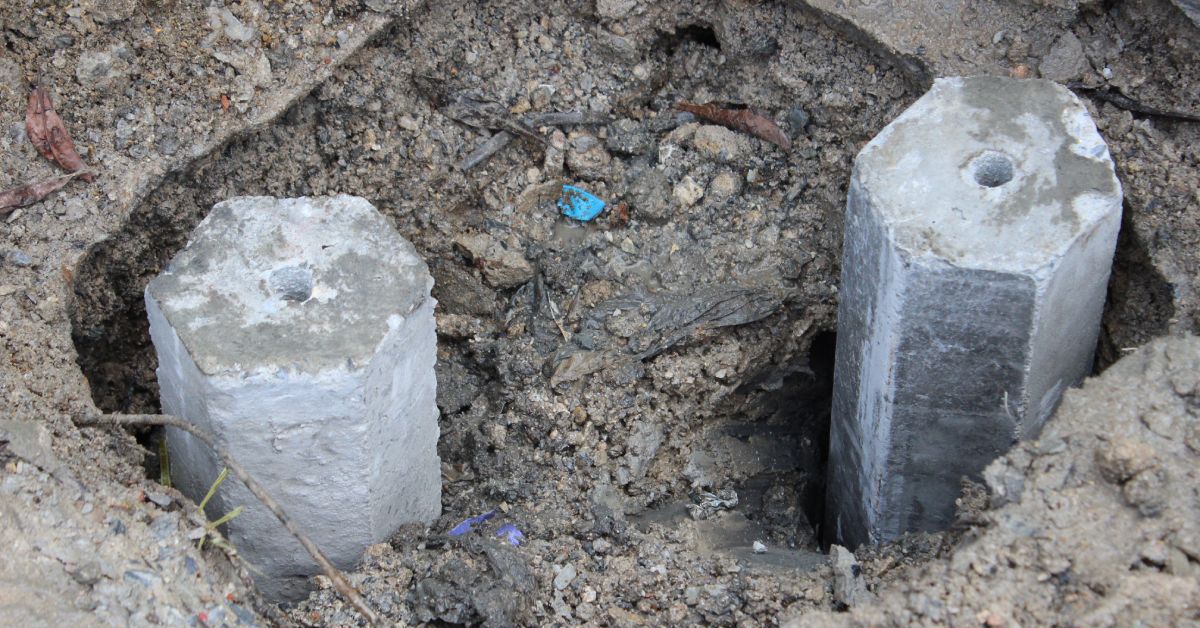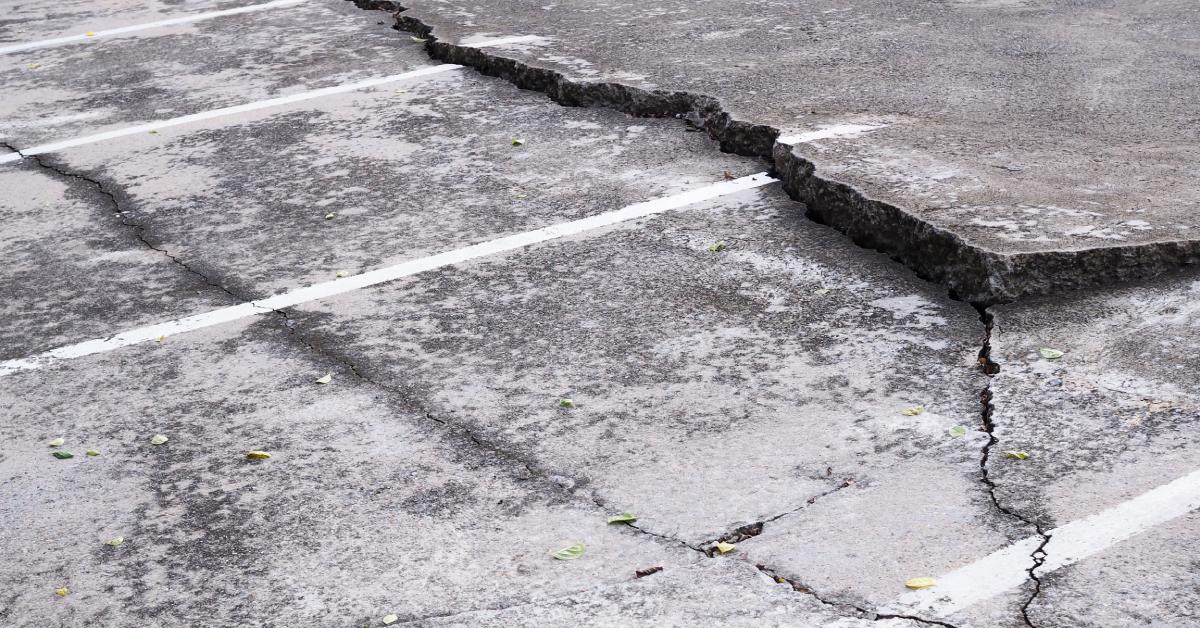Cracks in walls, uneven floors, and doors that won’t close properly are all telltale signs of foundation damage. Addressing these issues promptly is crucial to preventing the problem from worsening and requiring more extensive and costly repairs. Discover how foundation repair practices for commercial properties restore concrete slabs.
Causes of Foundation Damage
Understanding the causes of foundation damage makes it easier to appreciate how foundation repair techniques work.
The following factors can cause foundations to shift or crack:
- Soil erosion: Erosion can cause the soil beneath a foundation to shift, leading to instability and potential damage over time.
- Poor construction practices: Inadequate foundation design or construction can result in weaknesses that eventually compromise structural integrity.
- Plumbing leaks: Undetected leaks can saturate the soil, causing it to expand and contract, which affects the foundation’s stability.
- Tree root intrusion: Roots from nearby trees can grow underneath a foundation, exerting pressure and causing cracks or shifts.
- Poor drainage: Water accumulation around a foundation can cause the soil to expand and contract, potentially leading to foundation damage.
Non-Invasive Polyurethane Repair
Non-invasive polyurethane repair, a process known as polyjacking, fixes foundation problems without the need for extensive excavation. This technique involves injecting a high-density polyurethane foam under the affected concrete; the foam expands, filling voids and stabilizing the foundation.
URETEK is the premier commercial foundation repair company offering polyurethane repairs in Houston. To guarantee the best results possible, we use our patented hydrophobic polyurethane foam. It’s a durable, structural-grade polymer that restores the levelness of the concrete, and the results can last for 20 years or longer.
How Polyjacking Benefits Businesses
Polyjacking minimizes disruption to day-to-day operations, allowing businesses to maintain productivity during the repair process. Additionally, URETEK’s polymer cures to 90 percent strength in 15 minutes, which reduces downtime and enables businesses to resume normal activities as soon as possible.
Since the URETEK Method doesn’t require excavation, a large team of technicians, or a lot of equipment, it’s also cost-effective. Slashing costs means that companies can allocate their budgets more efficiently. Minimal disruptions, fast results, and cost savings all make polyurethane injection one of the best foundation repair practices for commercial properties.
Polyjacking Raises Sunken Concrete
Polyurethane repair can restore other concrete assets besides the foundation, including warehouse floors, parking lots, sidewalks, walkways, and loading docks. This process not only improves the safety and appearance of the property but also extends the lifespan of the concrete. Concrete slab lifting is a cost-effective alternative to replacing the entire slab, saving businesses both time and money.
Pressed Piling Foundation Repair
Pressed piling foundation repair involves driving columns made of concrete into the ground until they reach stable soil or bedrock. The deep insertion of pilings ensures that the foundation remains secure, even if the upper layers of soil shift.
At URETEK, our pilings consist of 12-inch x 6-inch pre-cast concrete cylinders. During the repair process, crew members first dig to expose the building’s grade beam—a horizontal structural element that distributes the load from a building’s walls to the foundation. We install the piling system underneath the grade beam.
The crew then presses the pilings one on top of the other into the soil until the building lifts to the right level. Then, they place a cap block on the top piling to distribute the load evenly and provide a stable surface. Finally, they apply metal shims to hold the building’s final position. After these steps, the crew cleans up the area, making every effort to restore it to its original state.
Soil Injection
Soil injection is a specialized technique used to stabilize expansive soils that cause foundation movement. This method involves injecting a chemical solution into the soil to reduce its swelling potential. URETEK’s expanding polyurethane foam is excellent for this task, reliably binding soil particles together to prevent excessive expansion and contraction.
One of the key benefits of soil injection is its ability to address the root cause of foundation problems. By stabilizing the soil, this method fights against future foundation issues. Additionally, soil injection is minimally invasive, causing little disruption to the property’s landscape and surrounding structures.
Void Fill
Voids under concrete foundations create unstable conditions that may cause the concrete to sink or crack. Voids can cause uneven load distribution that results in the need for more frequent concrete repairs. Additionally, water can easily collect and remain trapped in these empty spaces, leading to problems like mold growth or water damage to the structure above.
Voids can occur due to soil erosion, settlement, or other factors. When the option is suitable for the property, URETEK uses expanding polyurethane foam to fill empty spaces and compact the soil, improving support for the foundation. This process prevents further foundation settlement and helps distribute the load of the building more evenly, reducing the risk of future damage. Void filling with polyurethane foam is quick and efficient, making it an ideal solution for commercial properties that need prompt attention.
Foundation Maintenance Tips
The sooner business owners and property managers notice potential foundation damage, the easier the repair process can be. If you notice signs of foundation problems, consult a foundation repair specialist to identify the underlying causes and necessary repairs.
The following issues may indicate foundation problems:
- Cracks in walls or floors, particularly those that are widening or zigzagging.
- Floors that appear uneven or have noticeable slopes.
- Doors or windows that stick or are difficult to open and close.
- Gaps that appear around window or door frames.
- Unusual settling or sinking of any part of the building.
- Separation of the walls from ceilings or floors.
- Water pooling around the foundation, indicating possible drainage issues.
- Buckling or bowing walls, which are indicative of pressure or shifting.
Additionally, maintaining proper drainage around the foundation is crucial for preventing water-related damage. Keep gutters and downspouts clean and in good condition so that they direct water away from the building. Installing French drains or utilizing permeable paving can further assist in managing excess water and maintaining a stable foundation.
Effective foundation repair techniques keep your commercial property safe and attractive. Speak to a foundation repair specialist to understand how polyurethane foam, pressed pilings, soil injections, and void fill can restore your building’s foundation and prevent further damage. The contractor will assess the type and extent of damage and recommend the right solution for your property and your area’s environmental conditions.



